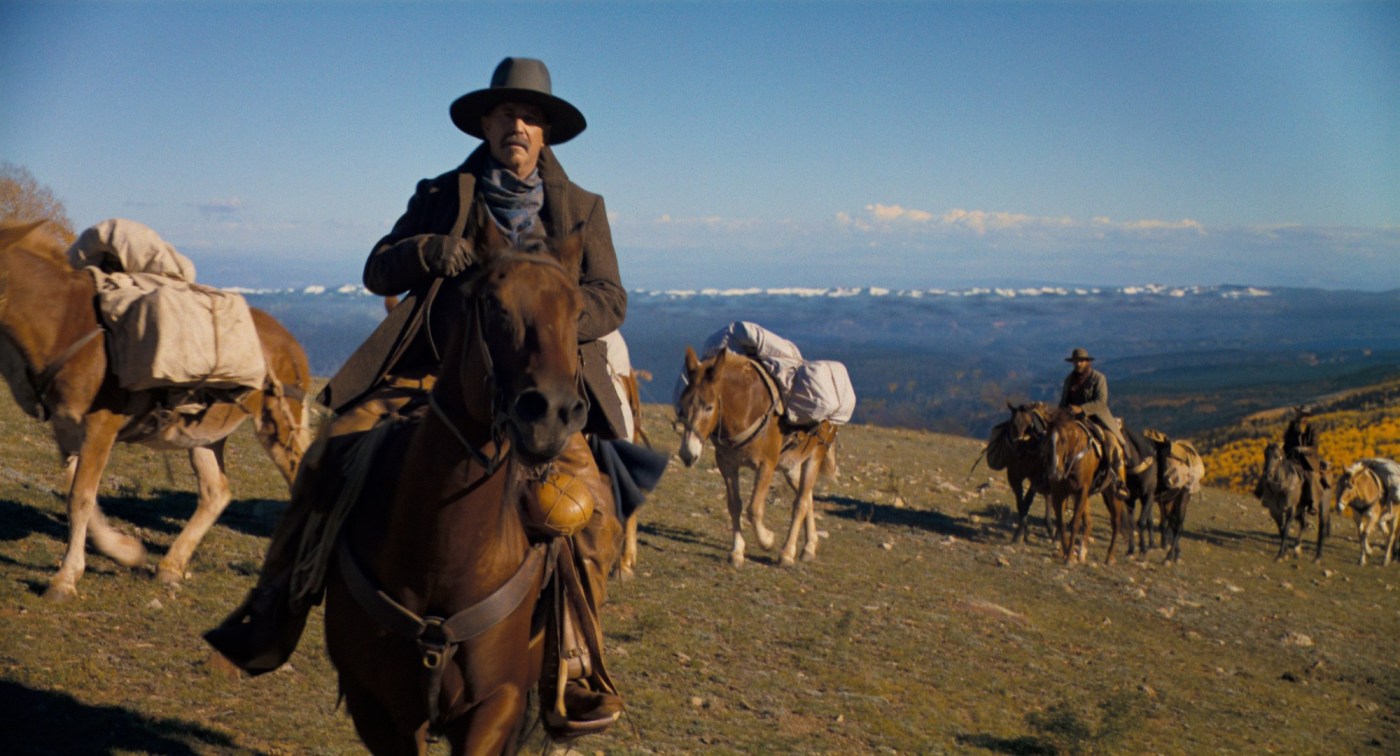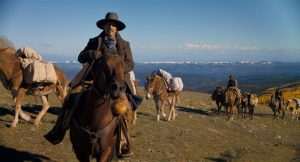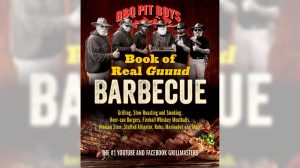
‘Horizon: Chapter 1’ review: Saddle up for a long, loping ride
“Horizon: An American Saga — Chapter 1” marks Kevin Costner’s return to the Western genre that brung ‘im into stardom nearly 40 years ago. This first part constitutes a stern handshake agreement with his audience: Just get through these first three hours, people. Quit your bellyaching. You know what these folks had to do to survive?
Things could perk up and get rolling come August, when Chapter 2 of this reverently labeled “American Saga” continues in theaters, to be followed by Chapter 3 (currently filming) and then, finances and distribution/streaming arrangements with Warner Bros. and Max willing, the big finale. But Chapter 1 feels like throat-clearing — a serviceable horse opera overture to a curiously dispassionate passion project.
“Horizon” dates back to the 1980s, when Costner’s career was launched by “Silverado” (1985), in which he was the liveliest element by far, playing the giddy, loose-cannon brother of Scott Glenn. Rewatching “Silverado” today, in the wake of Costner’s familiar, surly, “Yellowstone” grimacing, it’s astonishing how little remains of that earlier performer, and it’s not just the age difference. Now 69, Costner has settled in a narrow, slot-canyon sort of macho archetype, which has worked well for him, depending on the scripts. Here and there in “Horizon” it works, too, when the calculation falls away and a stray moment of hidden feeling surfaces, quietly.
But actors are at the mercy of their material. Chapter 1 of “Horizon” is wide but shallow, and wanly dramatized in between the passages of violence, some well-staged and effective, others more generically brutal. The movie surely wins the Loudest Splurch sound design award; when an Apache arrow hits a human target, it’s as if the arrows were literally wired for sound.
The first “Horizon” film divides itself into what feels like three one-hour TV episodes. Cowriters Jon Baird and Costner lay many miles of narrative track designed to transport several groups of characters in different parts of the West to the same destination, a tiny riverbank town in the making called Horizon in the San Pedro Valley, aka John Ford country. This is where the film starts, in 1859.
It’s Apache land, and the white colonizers (fine, “settlers”) have put literal stakes in it to claim it for themselves. This leads quickly to a retaliatory Apache massacre, contextualized a bit by a handful of scenes in Chapter 1 devoted to, or at least concerned with, Apache warrior brothers Pionsenay (Owen Crow Shoe) and Taklishim (Tatanka Means) and their tribal factions. Two survivors of the massacre, brutally widowed Frances (Sienna Miller) and her daughter Lizzie (Georgia MacPhail), are taken in by the kindly Union Army officer played by Sam Worthington at a nearby fort. Love is in the air, but demurely.
Costner directed “Horizon” in addition to co-writing, producing and partially financing the project; he has acknowledged planning to spend $100 million or more of his own money to conjure all four chunks of the saga into existence. As an actor, he rides into Chapter 1 at the one-hour point, as tight-lipped Hayes Ellison, horse trader and former gunslinger. He’s in pre-statehood Montana territory for reasons to be named later, and he’s soon tangling with a random scumbag from a mean, bloodthirsty local clan. Haphazardly, Costner’s character ends up heading out on the trail with wily sex worker Marigold (Abbey Lee) who’s taking care of a baby, while bad men pursue them and Costner’s faraway wife remains, for now, unseen and far away.
Meanwhile, along the Santa Fe Trail, Luke Wilson plays a wagon train leader trying to keep his Horizon-bound settlers alive in the hot Kansas territory, with little water, plenty of crises and, at one point, a couple of pervy Peeping Toms spying on the best-looking female while she sneaks a starlit shower for herself. Wilson’s character, the voice of reason, basically shames the woman for hogging the water and catching the menfolk’s eye. You can see what Costner and Baird are attempting here, adding this tidbit about the scarcity of the water supply. But dialogue like this, and too much of “Horizon,” is just plain flat. I don’t think Costner’s his own best colleague here, either as writer or director. He and his cinematographer J. Michael Muro have an eye for topography, and backdrops, but “Horizon” needs more than horizons.
So you take what you can get. I got some honest satisfaction from Miller’s valiant attempt to make her saintly cliché human, and from the ease and laconic command Michael Rooker (as a Union Army officer and sounding board for Danny Huston’s fort commander) brings to the material. Chapter 1 ends with a sizzle reel of Chapter 2 highlights, giving audiences a sense of where all the characters are headed, and introducing new, big-city ones. The only thing missing is a voiceover: “Next time on ‘Horizon’ …”
I can’t help but wonder if Costner didn’t take his cues from the wrong kind of Westerns. Watch Anthony Mann’s “The Naked Spur” (1953) sometime, which gave James Stewart one of his most bracing challenges; the movie’s scenic but purposeful, lean, compact, character-driven, full of shifting allegiances and centered, however uneasily, by a fascinatingly self-doubting protagonist. Costner has it in him to work that same territory. “Horizon,” so far, anyway, is more about a certain set of movie memories than a movie of its own.
“Horizon: An American Saga — Chapter 1” — 2 stars (out of 4)
MPA rating: R (for violence, some nudity and sexuality)
Running time: 3:01
How to watch: Premieres in theaters June 27
Michael Phillips is a Tribune critic.


